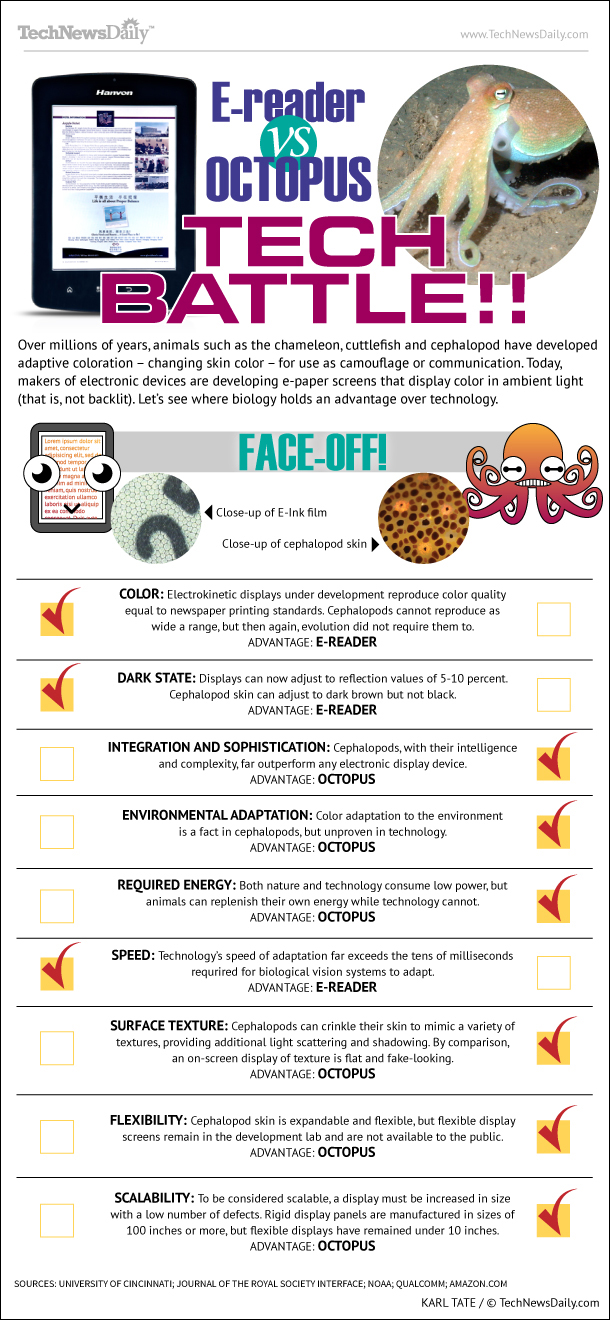How E-readers Stack Up Against Octopus Skin (Infographic)

Over millions of years, animals such as the chameleon, cuttlefish and cephalopod have developed adaptive coloration – changing skin color – for use as camouflage or communication. Today, makers of electronic devices are developing e-paper screens that display color in ambient light (that is, not backlit). Let’s see where biology holds an advantage over technology.
COLOR: Electrokinetic displays under development reproduce color quality equal to newspaper printing standards. Cephalopods cannot reproduce as wide a range, but then again, evolution did not require them to.
ADVANTAGE: E-READER
DARK STATE: Displays can now adjust to reflection values of 5-10 percent. Cephalopod skin can adjust to dark brown but not black.
ADVANTAGE: E-READER
Get the world’s most fascinating discoveries delivered straight to your inbox.
INTEGRATION AND SOPHISTICATION: Cephalopods, with their intelligence and complexity, far outperform any electronic display device.
ADVANTAGE: OCTOPUS
ENVIRONMENTAL ADAPTATION: Color adaptation to the environment is a fact in cephalopods, but unproven in technology.
ADVANTAGE: OCTOPUS
REQUIRED ENERGY: Both nature and technology consume low power, but
animals can replenish their own energy while technology cannot.
ADVANTAGE: OCTOPUS
SPEED: Technology’s speed of adaptation far exceeds the tens of milliseconds requrired for biological vision systems to adapt.
ADVANTAGE: E-READER
SURFACE TEXTURE: Cephalopods can crinkle their skin to mimic a variety of textures, providing additional light scattering and shadowing. By comparison, an on-screen display of texture is flat and fake-looking.
ADVANTAGE: OCTOPUS
FLEXIBILITY: Cephalopod skin is expandable and flexible, but flexible display screens remain in the development lab and are not available to the public.
ADVANTAGE: OCTOPUS
SCALABILITY: To be considered scalable, a display must be increased in size with a low number of defects. Rigid display panels are manufactured in sizes of 100 inches or more, but flexible displays have remained under 10 inches.
ADVANTAGE: OCTOPUS



